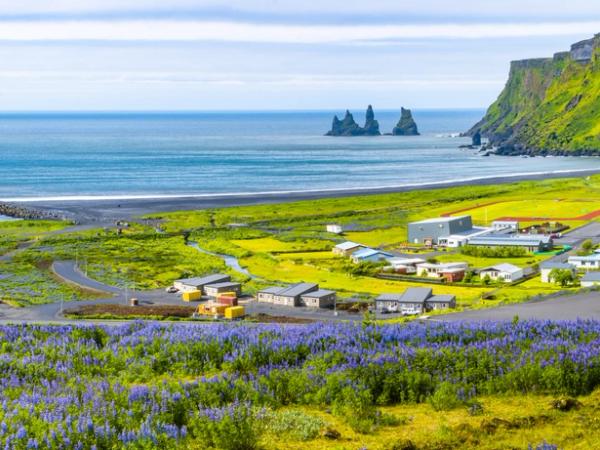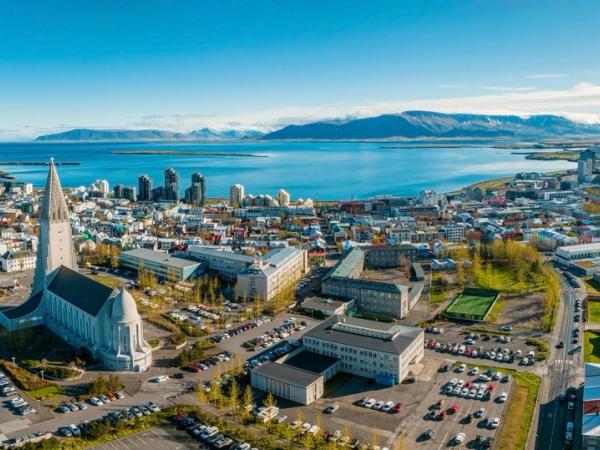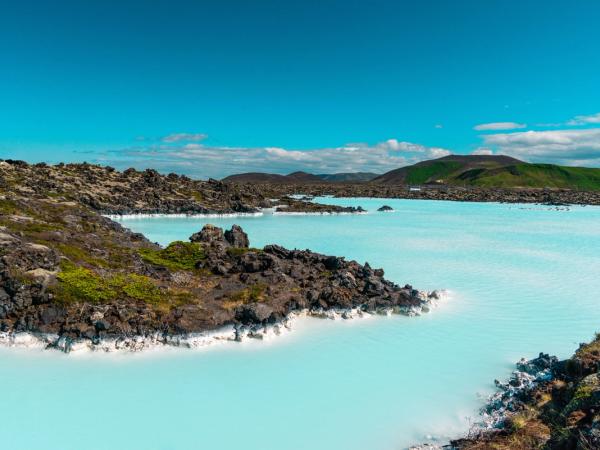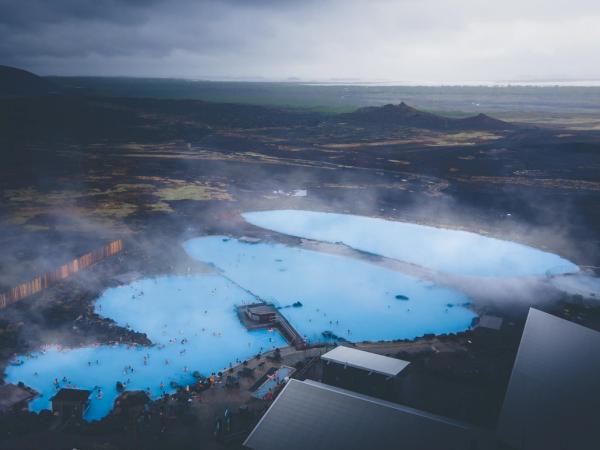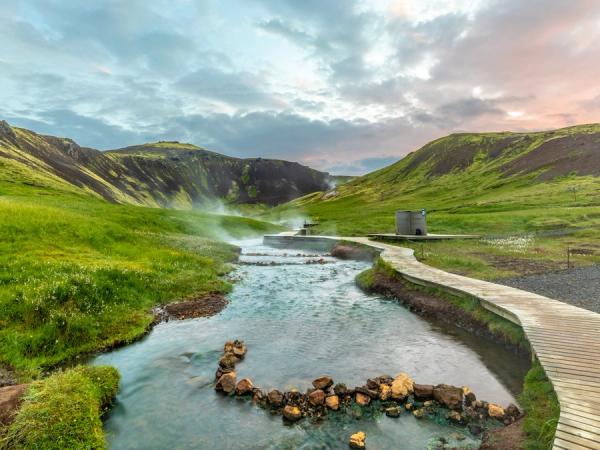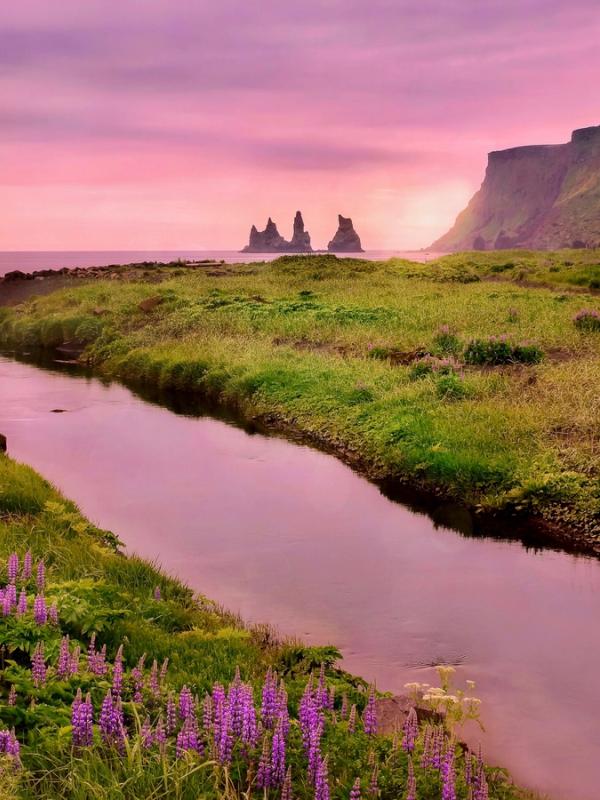
Weather in Iceland in June: What to Expect in 2025
Iceland in June is magical. Long daylight hours, milder temperatures, and a landscape that's finally awake after winter make it one of the best times to visit. But Iceland's weather can change quickly, even in summer months. Before you pack those hiking boots, let's look at what you can really expect from Iceland's June climate.
Key Takeaways
- June temperatures average 48-59°F (9-15°C) in most coastal areas
- Rainfall is moderate with about 2 inches of precipitation
- Enjoy nearly 24 hours of daylight with the midnight sun
- The north is typically drier than the south
- Pack layers, waterproof clothing, and good hiking boots
- June is perfect for hiking, puffin watching, and exploring areas that are normally hard to reach
Overview of the Weather in Iceland in June
June marks the beginning of summer in Iceland, bringing warmer temperatures and exceptionally long daylight hours. The weather is mild compared to the rest of the year, though it's still cool by most standards.
What makes June special is the more stable weather. You'll still get Iceland's famous "four seasons in one day," but extreme conditions are rare. Snow is mostly gone except in the highlands, roads are open, and flowers are blooming everywhere.
With better access and milder conditions, June is part of Iceland's busy tourist season. Book your accommodations early, but the effort is worth it – you'll see Iceland at its most vibrant.

The temperature in June in Iceland
June temperatures in Iceland are mild. Coastal areas typically experience temperatures between 48°F and 59°F (9 °C and 15°C) during the day, dropping to around 43°F and 46°F (6 °C and 8°C) at night.
In Reykjavík, the average high is about 54°F (12°C), with lows around 45°F (7°C). These are just averages – you might get days in the 60s°F (15-20°C), especially in sheltered valleys or when it's sunny.
Northern areas like Akureyri can actually be warmer than the south because the weather is more stable there. Temperatures can reach 59°F (15°C) or higher on clear days.
Higher elevations and the interior highlands stay much cooler, with averages between 41-50°F (5-10°C). Even in June, these areas might see frost or light snow overnight.
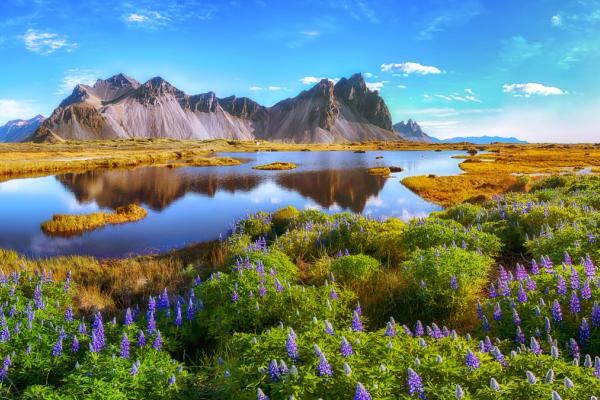
Does it Rain and Snow in June in Iceland?
June in Iceland gets a moderate amount of rain, though it's drier than fall and winter. The country gets around 2 inches of rain throughout the month, usually as light showers rather than heavy downpours.
Southern regions typically get more rain than northern areas. Reykjavík typically experiences 10-12 days with some rainfall in June, whereas Akureyri may have only 4-8 rainy days.
Snow is rare in lower areas during June. However, the central highlands can still have patches of snow, especially early in the month or at higher spots. Some mountain roads remain closed until late June due to snow.
Rain in Iceland is usually light but can last a while. The good news is that the weather changes quickly, so a rainy morning often turns into a sunny afternoon. This means you should always be ready for wet weather, even when the forecast looks good.
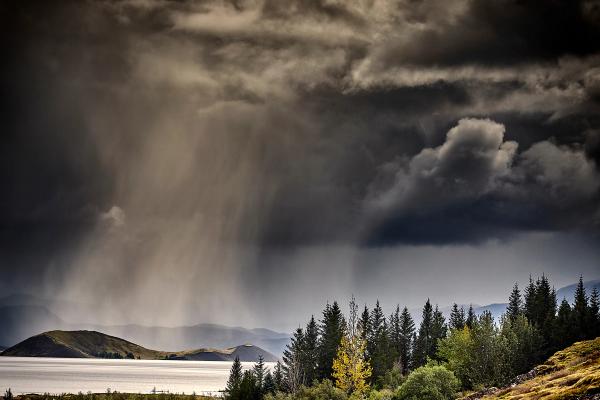
Daylight Hours
One of the coolest things about June in Iceland is the almost 24-hour daylight. This happens because Iceland sits just south of the Arctic Circle.
In Reykjavík, the sun officially sets for only about 2-3 hours in late June, but it doesn't get dark – there's a constant twilight. On June 21st (the longest day of the year), Reykjavík gets about 21 hours and 45 minutes of visible daylight.
Northern areas like Akureyri have even more dramatic light, with the sun barely setting in late June. This creates a continuous golden hour – great for photos.
These long daylight hours are great for travelers:
- More time for sightseeing
- No rush to finish activities before dark
- Unique photo chances with golden light at midnight
- Safer driving with constant visibility
The constant light can make sleeping tough, so hotels usually have blackout curtains, but bringing a sleep mask is a good idea.
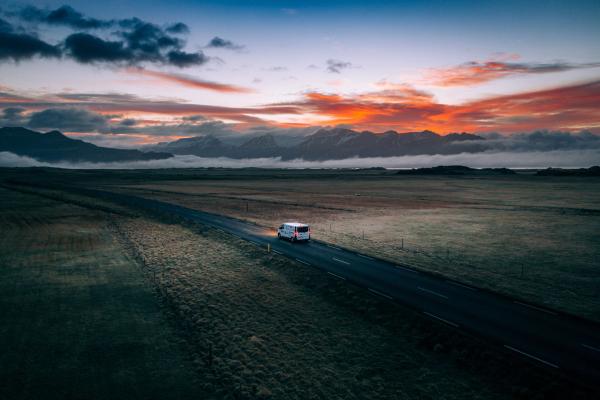
Weather in Iceland in June by Region
June is a great time to visit the country in general, although the weather changes significantly from one region to another.
South (Reykjavík, Vik, Golden Circle)
The South Coast, including Reykjavík, sees temperatures of 45-54°F (7-12°C) with about 2 inches of rain. This region tends to be cloudier and a bit wetter than northern Iceland.
Reykjavík has fairly stable weather in June, though sudden wind gusts and quick showers happen. The Golden Circle area is similar, with temperatures sometimes higher in sheltered areas like Þingvellir.
Vik and the southern coastal areas face more changing conditions because they're exposed to Atlantic weather. Wind can be stronger here, and fog sometimes comes in from the ocean, temporarily blocking views at places like Reynisfjara black sand beach.
North (Akureyri, Húsavík)
Northern Iceland, including Akureyri and Húsavík, often has the best June weather. Temperatures range from 45-59°F (7-15°C), with noticeably less rain than the south – often less than 1.2 inches for the month.
Akureyri sits in a fjord surrounded by mountains, creating a pocket of protection from harsh weather. It typically gets more sunshine than Reykjavík in June, making it surprisingly pleasant.
The north benefits from more stable high-pressure systems in summer, creating stretches of clear, calm days that are perfect for whale watching around Húsavík or exploring Lake Mývatn.
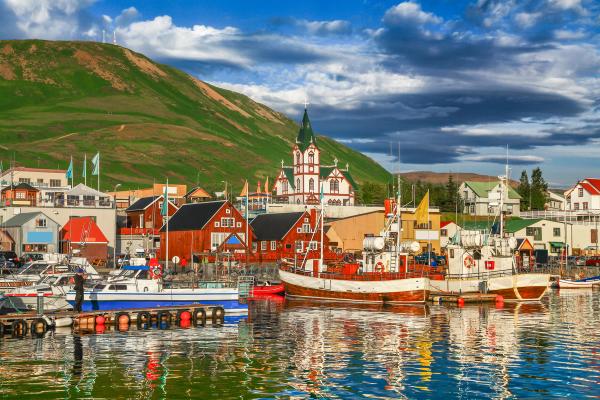
East
Eastern Iceland experiences June temperatures similar to those in the north, averaging 45-57°F (7-14°C). This region gets moderate rainfall, particularly in the southeastern areas near Vatnajökull glacier.
The East Fjords create many small microclimates, where one fjord might be sunny while the next sees rain. Generally, the inner fjords are warmer and more protected from wind than coastal areas.
Morning fog is common in the fjords but typically burns off by midday. The East enjoys excellent conditions for experiencing the midnight sun, with beautiful low-angle light illuminating the dramatic fjord landscapes.
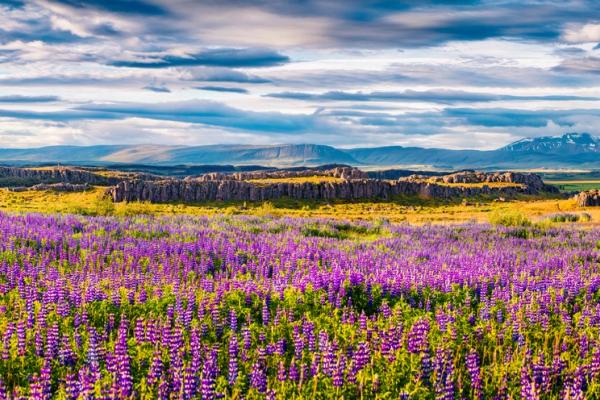
West
Western Iceland, including the Snæfellsnes Peninsula, has June temperatures of 45-54°F (7-12°C) with moderate rainfall that's typically higher than the north but lower than the south.
This region gets weather from multiple directions, making it somewhat unpredictable. The Snæfellsnes Peninsula in particular can experience rapidly changing conditions due to its prominent position and the influence of Snæfellsjökull glacier.
Coastal fog can occur in western regions, especially in the mornings, sometimes hiding landmarks like Kirkjufell mountain. However, these fog banks often clear by afternoon.
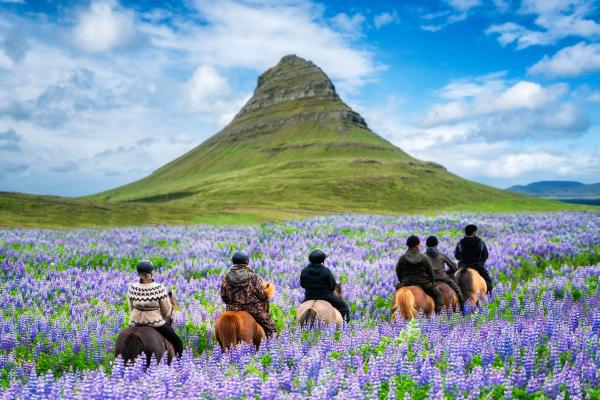
Central Highlands
The Central Highlands remain Iceland's coolest region in June. Temperatures range from 39°F to 50°F (4 °C to 10°C), with nighttime temperatures occasionally dropping near freezing.
Many highland areas become accessible in June as snow melts, though some mountain roads may not open until late June. Early June visitors might still see significant snow patches in areas like Landmannalaugar.
The weather in the highlands changes extremely quickly. Clear, sunny conditions can rapidly shift to fog, rain, or even light snow at higher elevations. Wind tends to be stronger here than in coastal areas.
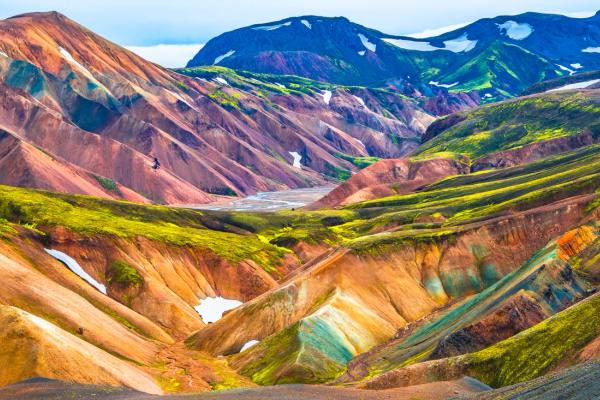
Westfjords
The temperatures in the remote Westfjords in June average 43- 52°F (6-11°C). This rugged region tends to be slightly cooler than southwest Iceland because it's further north.
The weather in the Westfjords varies greatly from place to place due to the complex landscape of fjords and mountains. One valley might be sunny while the next sees rain. Wind patterns can be complex, sometimes creating strong gusts where fjords narrow.
Many roads in the Westfjords become fully accessible in June, although some of the more remote routes may still experience issues early in the month. The region's dramatic landscapes look amazing under the midnight sun.
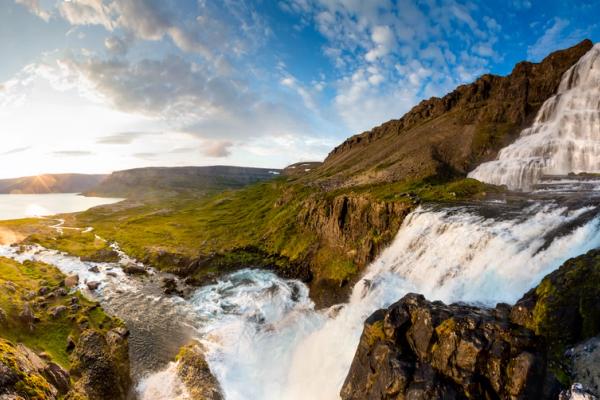
2024 Overview
June 2024 in Iceland was colder than usual. Weather data shows temperatures dropped below normal all across the country.
Reykjavík hit an average of 8.7°C (47.7°F), which was 1.1°C cooler than usual. Akureyri up north was even chillier at 8.2°C (46.8°F) - a good bit below what folks have come to expect in recent years.
Rain wasn't playing by the rules either. Reykjavík received 59.3 mm (2.33 inches) of rain, about a third more than usual. Akureyri got an even bigger surprise with 54.9 mm (2.16 inches) – double its typical June rainfall! Locals endured 11 rainy days instead of the usual 4. That's a lot of indoor coffee time.
The real shocker? Snow in June! North Iceland got hit with snow early in the month. Some spots got buried:
- Vaglaskógur measured 43 cm (16.9 inches) on June 5
- Grímsstaðir piled up 32 cm (12.6 inches) on June 4
This unusual snow wasn't just pretty pictures - it caused real problems. Farmers took losses, birds died, and mountain roads shut down. Imagine planning your highland trip only to find the road blocked by snowdrifts... in June!
Winds blew stronger than normal, too, with the strongest gusts hitting on June 4-5 when the north wind kicked up.
It wasn't all gloomy, though. Reykjavík still managed nearly 198 hours of sunshine, which is actually slightly more than the average. So while it was cooler and wetter, there were still plenty of bright moments for photos.
What to Pack
Packing for Iceland in June means being ready for changing conditions. Essential items include:
- Waterproof jacket and pants (lightweight but reliable)
- Warm mid-layers (fleece or wool sweaters)
- Moisture-wicking base layers
- Sturdy, waterproof hiking boots
- Hat and gloves (even in June, especially for highland visits)
- Sunglasses and sunscreen (the sun is up most of the day)
- Sleep mask (if you're sensitive to light when sleeping)
- Swimsuit (for hot springs and pools)
- Camera (for capturing the midnight sun)
The key is layering. You might start the day with multiple layers and gradually take them off as it warms up, only to put them back on in the evening or if weather changes.
Even though it's summer, avoid cotton clothing which gets cold when wet. Instead, go for wool or synthetic materials that keep you warm even in damp conditions.
Things to Do in June
The nice June weather is perfect for outdoor activities and wildlife experiences.
Hiking
June is an ideal time for hiking in Iceland. Most trails are free of snow, and the long daylight means you can start late without worrying about darkness. Popular June hiking spots include:
- Skaftafell in Vatnajökull National Park
- Þórsmörk Valley (accessible by special buses in June)
- Coastal paths in the Eastfjords
- Hornstrandir Nature Reserve in the Westfjords
The highlands begin to open in June, although some areas, such as Landmannalaugar, may still be difficult to reach early in the month.
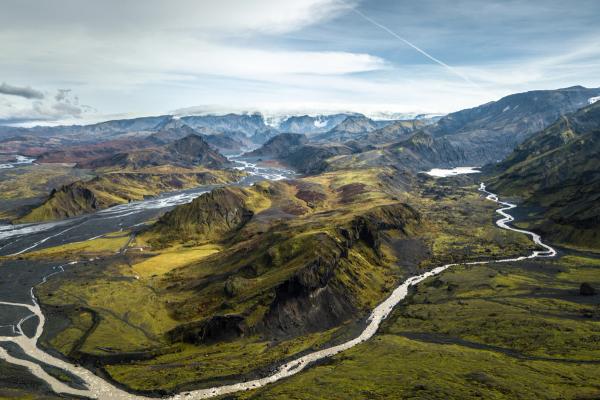
Whale Watching
June is great for whale watching, with more whales in Icelandic waters. Húsavík in North Iceland is the whale watching capital, but tours also run from:
- Reykjavík
- Akureyri
- Dalvík
- Ólafsvík on Snæfellsnes Peninsula
Types of whales commonly seen in June include humpback whales, minke whales, white-beaked dolphins, and harbor porpoises. Orcas are occasionally spotted, particularly in the west.
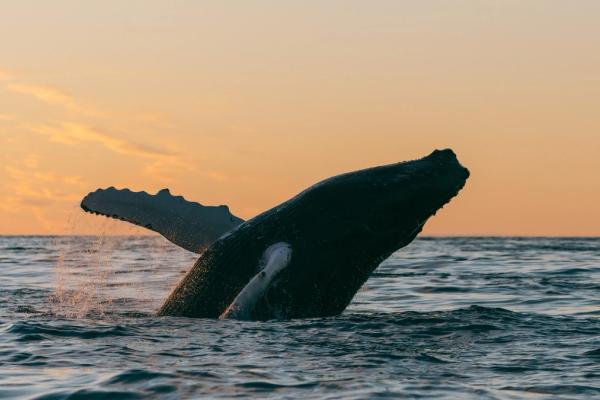
Puffin Watching
June is prime puffin season, when these cute birds are nesting along Iceland's cliffs. Top puffin watching spots include:
- Látrabjarg in the Westfjords
- Borgarfjörður eystri in East Iceland
- Dyrhólaey near Vík
- The Westman Islands
Tours are available from several coastal towns, but with a car, you can visit the lookout points on your own. Morning and evening hours typically offer the best viewing chances.
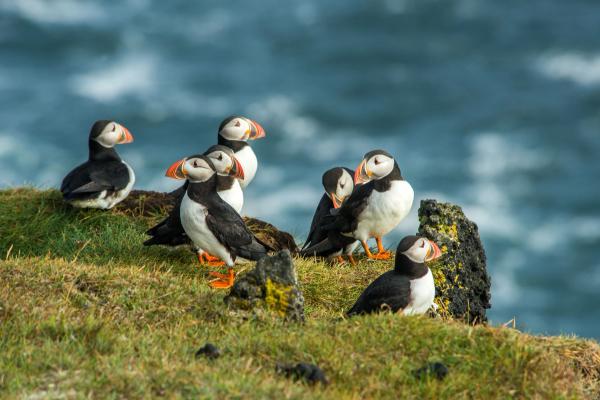
Midnight Sun Activities
Take advantage of the nearly endless daylight with special Midnight Sun experiences:
- Midnight sun golf (many courses offer late tee times)
- Evening horseback riding under the midnight sun
- Late-night hot spring visits
- Photography tours capturing the golden light
- Midnight hikes to viewpoints
These unique opportunities only happen during the few weeks around the summer solstice, so make the most of your visit.
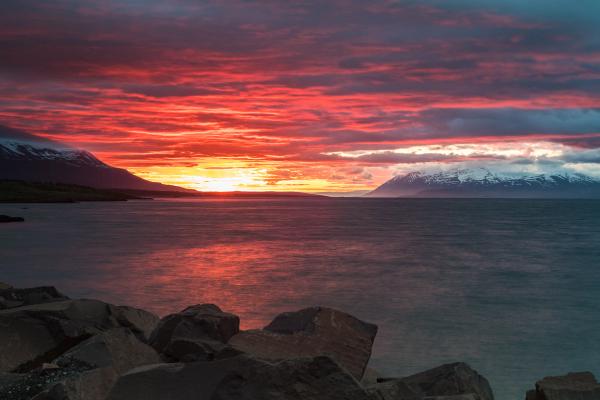
Hot Springs and Swimming
Iceland's geothermal pools and hot springs are super nice to visit all year-round, but the milder June weather makes the experience particularly pleasant. Beyond the famous Blue Lagoon, consider:
- The new Sky Lagoon near Reykjavík
- Mývatn Nature Baths in the north
- Secret Lagoon in Flúðir
- Natural hot springs like Reykjadalur Hot Spring Thermal River
There are swimming pools in every town, and visiting them gives you a glimpse of how Icelanders enjoy their hot spring culture.
Conclusion
June offers an ideal balance of accessibility, milder weather, and maximum daylight for exploring Iceland. While you should still prepare for changing conditions, it's one of the most reliable months for comfortable travel throughout the country.
The combination of open highland roads, active wildlife, flowing waterfalls, and the magical midnight sun makes June a prime time to experience Iceland's natural wonders. Remember to book accommodations well in advance, pack for variable conditions, and stay flexible to adapt to changing weather conditions.

